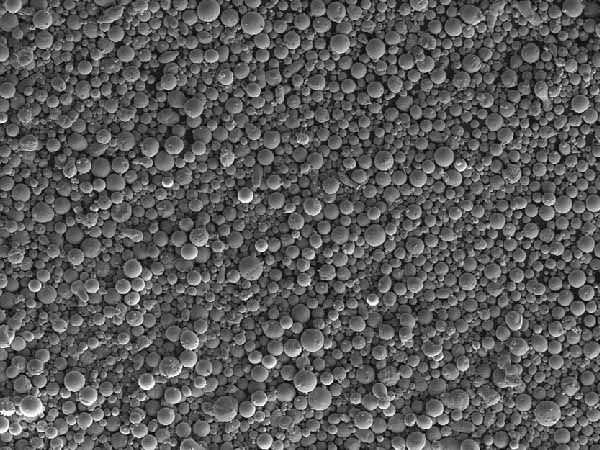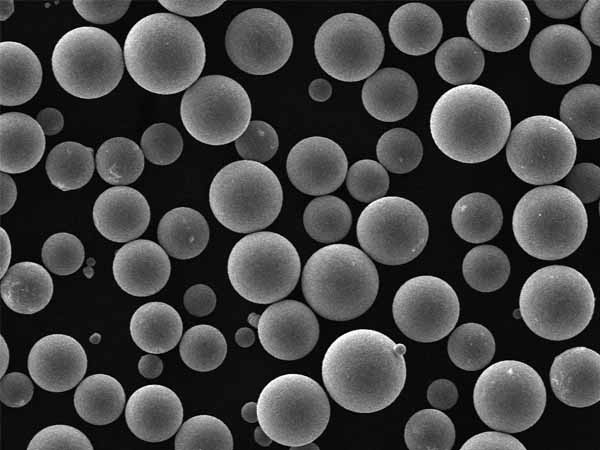1. What is 3D printing metal powder and how does it work?
3D printing metal powder is a critical component in the additive manufacturing process, specifically in metal 3D printing. The powder acts as the raw material that’s meticulously fused together layer by layer to produce a solid metal object.
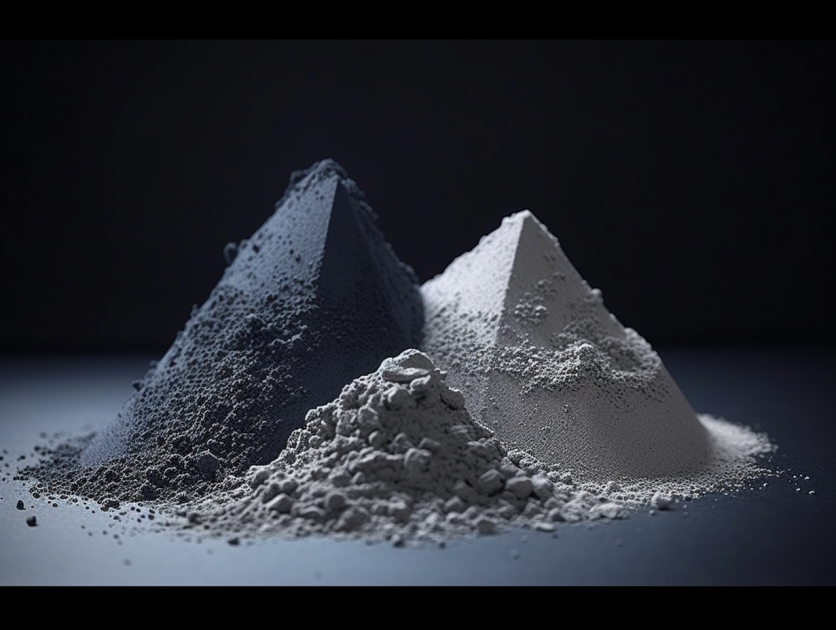
When discussing 3D printing metal powder, it’s essential to understand the following concepts:
- Metal Powder Composition: This powder is not just ground-up metal. It consists of tiny metal particles of specific compositions and sizes suitable for additive manufacturing.
- Additive Manufacturing Process: Unlike traditional subtractive methods (where material is removed), in 3D printing, the object is built layer by layer, adding material where needed.
- Laser or Electron Beam: In metal 3D printing, a high-powered laser or electron beam selectively fuses or melts these metal powders layer by layer to form the final object.
- Binder Jetting: Another method employs a binder to help adhere the metal powder together. This object is then post-processed, typically by sintering, to achieve full density.
- Layer Thickness: Precision is critical. The thickness of the layers determines the resolution and strength of the printed object.
- Support Structures: When printing, support structures are sometimes necessary to prevent deformation, especially for complex geometries.
- Post-processing: After printing, the object often undergoes various post-processing steps, such as heat treatments or surface finishings, to achieve desired mechanical properties or aesthetics.
- Safety Considerations: Working with metal powders can be hazardous. Proper storage, handling, and safety measures must be in place.
- Environmental Impact: There’s an ongoing debate about the environmental impact of 3D printing metals, with factors like energy consumption and waste production in the spotlight.
- Cost Implications: While 3D printing can be more resource-efficient for certain applications, the initial investment, especially in metal 3D printing, can be high.
2. What are the various types of metal powders used in 3D printing?
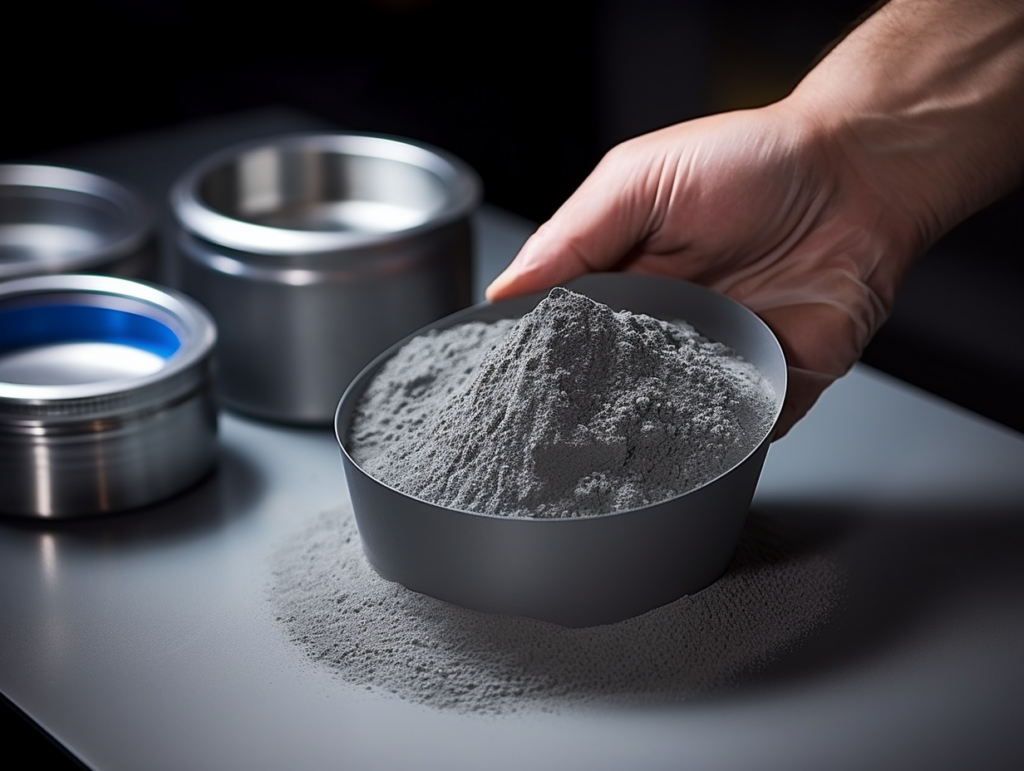
The world of 3D printing metal powders is diverse, catering to a wide range of applications and requirements. Here’s an overview of the most common types:
- Titanium: Especially Ti6Al4V, is widely used due to its excellent strength-to-weight ratio. Common in aerospace and medical implants.
- Stainless Steel: Offers a balanced combination of mechanical properties and corrosion resistance. It’s used in various sectors, from automotive to consumer goods.
- Aluminum: Popular for its lightweight properties, it finds its applications mainly in the automotive and aerospace industries.
- Nickel Alloys: These are high-performance materials designed to withstand extreme environments. They’re often used in the aerospace and energy sectors.
- Cobalt-Chromium: This alloy is biocompatible, making it suitable for dental and medical applications.
- Precious Metals: Metals like gold and silver can be 3D printed for jewelry or specialized electronics applications.
- Tool Steel: Known for its hardness and durability, it’s used to produce molds, dies, and cutting tools.
- Copper: With excellent thermal and electrical conductivity, copper is beneficial for heat exchangers and electrical components.
| Metal Type | Primary Use | Notable Properties |
|---|---|---|
| Titanium | Aerospace, Medical | Strength-to-weight ratio |
| Stainless Steel | General Manufacturing | Balance of properties |
| Aluminum | Aerospace, Automotive | Lightweight |
| Nickel Alloys | Aerospace, Energy | High Performance |
| Cobalt-Chromium | Medical, Dental | Biocompatibility |
| Precious Metals | Jewelry, Electronics | Aesthetics, Conductivity |
| Tool Steel | Manufacturing | Hardness, Durability |
| Copper | Electronics | Thermal & Electric |
- Custom Alloys: Companies often develop proprietary metal powders tailored for specific applications or to achieve unique material properties.
- Quality Control: Regardless of the type of metal, ensuring the purity and consistency of the powder is paramount. This often involves rigorous testing and certification processes.
3. How are these metal powders produced?
Producing metal powders for 3D printing is a complex procedure requiring precision and quality control. Here are the primary methods used:
- Gas Atomization: This is the most common method for making metal powders for 3D printing. In this process, molten metal is forced through a nozzle where high-pressure gas breaks it up into tiny droplets that solidify into powder particles.
- Water Atomization: Similar to gas atomization, but water is used instead of gas. This method produces irregularly shaped particles.
- Electrolysis: Primarily for copper and nickel powders. In this method, metal is dissolved into a solution and then redeposited as powder.
- Chemical Reduction: Metal salts are reduced in a controlled environment, producing metal powders.
- Centrifugal Disintegration: Molten metal is flung from the tip of a rotating rod, forming droplets that solidify into powder.
- Mechanical Alloying: Different metal powders are milled together to form an alloy.
- Hydride-Dehydride Process: Used mainly for titanium. The metal is turned into a hydride, pulverized, and then dehydrided to get back the metal in powder form.
| Method | Metals Commonly Produced | Particle Shape |
|---|---|---|
| Gas Atomization | Most metals | Spherical |
| Water Atomization | Steel, Iron | Irregular |
| Electrolysis | Copper, Nickel | Irregular to Spherical |
| Chemical Reduction | Copper, Nickel, Iron | Varies |
| Centrifugal Disintegration | Titanium, Zirconium | Spherical |
| Mechanical Alloying | Custom alloys | Irregular |
| Hydride-Dehydride | Titanium | Irregular |
- Particle Size and Distribution: The size of the powder particles and their distribution is crucial in 3D printing. Different applications might require varying particle sizes.
- Post-Processing: After production, the powders often go through sieving to ensure consistent particle size and treatments to improve flowability.
- Storage and Safety: These powders are reactive and can be hazardous. Proper storage, often under inert gas, is necessary.
4. What are the key advantages of using 3D printing metal powder over traditional methods?

The utilization of 3D printing metal powder provides several advantages over conventional manufacturing techniques:
- Complex Geometries: Traditional manufacturing processes can limit design possibilities. With 3D printing, intricate designs, internal lattices, and organic geometries are achievable, which would be difficult or even impossible through conventional means.
- Rapid Prototyping: Moving from a digital design to a physical prototype becomes much quicker. This acceleration facilitates rapid iterations and testing.
- Material Efficiency: Traditional methods, especially subtractive manufacturing, can result in significant material waste. In contrast, 3D printing only uses the necessary material, reducing waste.
- Customization: Producing bespoke or tailor-made parts is more feasible and economical, especially for sectors like healthcare where customization can have substantial benefits.
- Tool-less Manufacturing: There’s no need for molds or machine setup, which often means reduced lead times and costs.
- Consolidated Parts: Multiple parts of an assembly can be printed as a single unit, reducing assembly times and potential points of failure.
- On-Demand Production: Inventory costs can be reduced with the ability to produce parts on-demand.
- Supply Chain Simplification: Digital inventory and localized production can reduce the complexities and vulnerabilities in supply chains.
- Innovative Material Combinations: 3D printing allows for the exploration of new alloy combinations that might not be feasible through traditional methods.
- Environmental Benefits: By optimizing designs for material efficiency and reducing transportation needs with localized production, there can be potential environmental advantages.
5. Are there limitations or challenges when working with 3D printing metal powders?
Like any technology, using 3D printing metal powders comes with its set of challenges:
- High Initial Costs: The initial investment for high-quality metal 3D printers can be significant, making it a barrier for some companies.
- Post-processing Needs: Parts often require additional post-processing steps, such as support removal, surface finishing, or heat treatments.
- Powder Handling and Safety: Metal powders can be reactive and pose inhalation risks. Proper handling and safety measures are crucial.
- Build Size Limitations: Depending on the 3D printer, there can be constraints on the maximum size of the parts that can be produced.
- Layer Lines and Surface Roughness: Parts may display layer lines, and surface roughness could be an issue, requiring further finishing steps.
- Material Availability: While many metals are available in powder form, the specific alloys or blends suitable for 3D printing might be limited or more costly.
- Residual Stresses: The layer-by-layer melting and solidifying process can introduce residual stresses in the printed parts, which might necessitate post-print heat treatments.
- Density and Porosity: Achieving fully dense parts without internal voids or porosities can be challenging, affecting the part’s mechanical properties.
- Knowledge Gap: As a relatively newer technology, there might be a lack of expertise or understanding in certain sectors about designing for additive manufacturing.
- Speed: While 3D printing is excellent for prototyping or small batch production, traditional methods can be faster for large-scale manufacturing.
6. How does the future look for metal 3D printing?

The prospects of metal 3D printing are promising, with several trends and advancements on the horizon:
- New Material Development: Continued research will likely bring forth new metal powder formulations, expanding the array of applications.
- Affordability: As the technology matures and adoption grows, costs are expected to decrease, making it accessible to a wider range of industries.
- Higher Precision and Resolution: Advances in machine hardware and software will lead to finer details and better surface finishes in printed parts.
- Faster Printing Speeds: Innovations are consistently being made to reduce print times without compromising on quality.
- Integration with AI and ML: Artificial Intelligence and Machine Learning can optimize designs, predict defects, and improve the overall printing process.
- Sustainability: As global focus shifts towards sustainability, 3D printing can play a crucial role in promoting material efficiency and reducing waste.
- Expanded Applications: As industries realize the potential of metal 3D printing, its applications will likely expand into sectors previously not considered.
- Hybrid Systems: We might see systems that integrate additive with subtractive methods, combining the strengths of both worlds.
- Improved Safety and Automation: Enhanced safety protocols and increased automation will make metal 3D printing more user-friendly.
- Research and Collaboration: Partnerships between academia, industry, and governments can propel the technology forward, addressing current challenges and opening new possibilities.
7. How can one ensure the quality of 3D printed metal parts?
Ensuring quality in 3D printed metal parts requires a combination of meticulous process control, testing, and post-processing:
- Material Selection: Using high-quality metal powders that are specifically designed for 3D printing is the first step. Always source materials from reputable suppliers.
- Optimal Printer Settings: Understand the specific requirements of your metal powder and adjust printer settings such as laser power, print speed, and layer height accordingly.
- Continuous Monitoring: Employ real-time monitoring systems to detect any inconsistencies or defects during the printing process. Many modern 3D printers come with integrated sensors that offer this capability.
- Post-processing: After printing, parts often require treatments like heat treatment to relieve internal stresses, or hot isostatic pressing to increase density.
- Physical Testing: Regularly test printed parts for mechanical properties such as tensile strength, elongation, and hardness to ensure they meet the required specifications.
- Surface Analysis: Using techniques like scanning electron microscopy (SEM) can provide insights into the surface quality and any potential defects.
- Non-Destructive Testing (NDT): Techniques like X-ray or ultrasonic testing can be used to detect internal defects without harming the part.
- Design Considerations: Incorporating design guidelines for additive manufacturing can help in producing parts that are both functional and of high quality.
- Maintenance: Regularly service and calibrate your 3D printer to ensure it operates at optimal conditions.
- Training: Ensure operators and designers are adequately trained in both the technology and the specific requirements of metal 3D printing.
8. What are common applications of 3D printed metal parts?
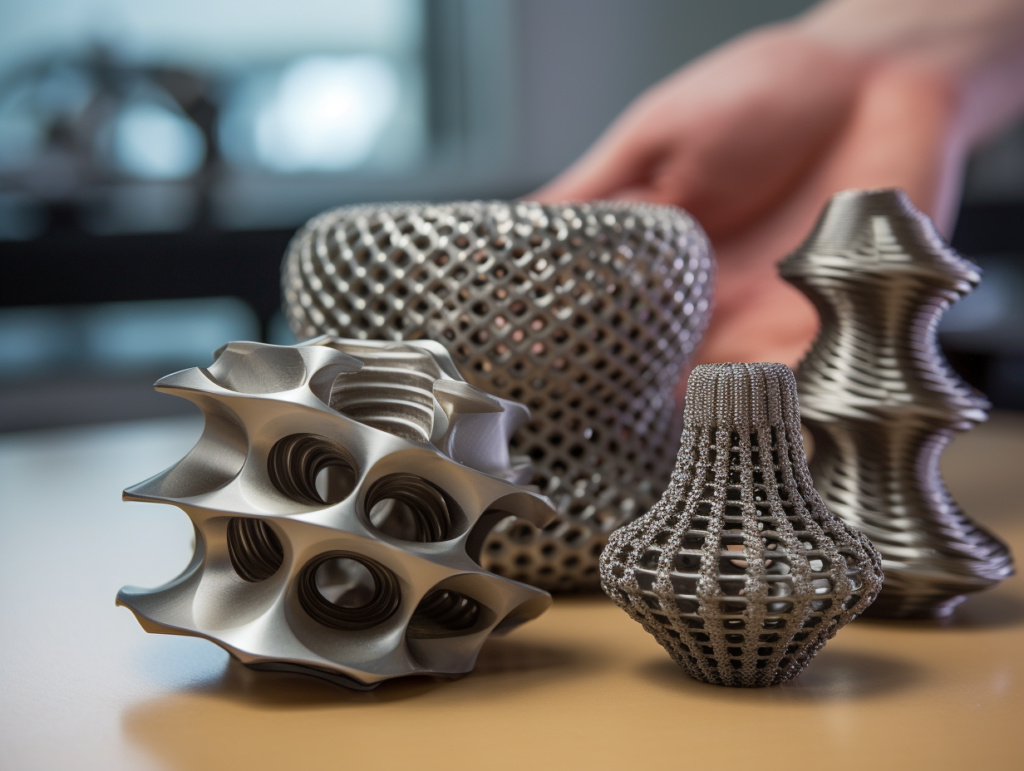
The versatility of metal 3D printing means it finds applications across various sectors:
- Aerospace: Production of lightweight and intricate parts for aircraft and rockets, improving fuel efficiency and overall performance.
- Medical: Custom implants, dental crowns, and surgical instruments tailored for individual patients, offering better fit and functionality.
- Automotive: From intricate engine components to customized car accessories, 3D printing allows for rapid prototyping and manufacturing.
- Jewelry: Allows designers to craft complex and unique pieces that would be challenging to produce using traditional methods.
- Energy: Parts for turbines, especially in the renewable energy sector, can be optimized for performance using 3D printing.
- Tooling: Production of molds, dies, and other tooling components can be sped up significantly using additive manufacturing.
- Research and Development: For testing new materials and designs, especially in sectors like nuclear energy where tailored parts are crucial.
- Architecture: Metal components for architectural models or even functional parts for building constructions.
- Defense: Components for weaponry, drones, and other equipment can be rapidly produced and iterated upon.
- Consumer Goods: From watches to gadgets, 3D printing allows for rapid product development and customization.
9. How do you safely handle and store 3D printing metal powder?
Safety is paramount when handling metal powders due to their reactive nature and potential health risks:
- Safety Gear: Always wear protective gear, including gloves, safety goggles, and a mask to prevent inhalation.
- Avoid Open Flames: Metal powders can be highly flammable. Ensure there are no open flames or sources of ignition nearby.
- Use Under Inert Atmosphere: In many cases, especially with reactive metals, processing and handling should be done under an inert atmosphere like argon or nitrogen.
- Humidity Control: Store metal powders in a low humidity environment to prevent unwanted reactions. Desiccants can be used in storage containers.
- Sealed Containers: Always keep the powders in sealed containers to prevent contamination.
- Regular Cleanup: Ensure the workspace is cleaned regularly to avoid accumulation of powders.
- Avoid Mixing Powders: Different metal powders should not be mixed unless you’re sure of the outcome and have taken necessary safety precautions.
- Training: Everyone involved in the handling and processing of metal powders should be trained in safety protocols.
- Ventilation: Ensure that the working area is well-ventilated. Installing fume hoods or exhaust systems can be beneficial.
- Material Safety Data Sheets (MSDS): Always refer to the MSDS for specific safety guidelines related to the particular metal powder you are handling.
10. What innovations are emerging in the field of metal 3D printing?
The metal 3D printing arena is evolving rapidly, with several notable innovations:
- New Material Alloys: Researchers are constantly developing new metal alloys tailored for 3D printing, expanding the realm of possibilities.
- Multi-Material Printing: Machines capable of printing with multiple materials simultaneously, enabling the creation of parts with graded or composite properties.
- Faster Print Speeds: Newer technologies and improved hardware are leading to a decrease in print times, making mass production more viable.
- AI-Powered Optimizations: The integration of artificial intelligence for optimizing print strategies, detecting defects, and even predicting material properties.
- Direct Metal Deposition: An additive manufacturing technique that involves the addition of metal powder or wire into a molten pool, allowing for repair or addition to existing parts.
- Binder Jetting: A process where metal powder is bound together using a liquid binder, enabling faster print speeds and then sintered to achieve full density.
- Enhanced Safety Features: With the increasing focus on safety, newer machines come equipped with advanced safety features and monitoring systems.
- Integration with Robotics: The fusion of 3D printing with robotics, allowing for more dynamic printing processes, especially in large structures.
- Sustainability Initiatives: With a global push towards green manufacturing, there are increasing efforts to make the metal 3D printing process more environmentally friendly.
- Cloud-based Platforms: Enabling collaborative design, remote monitoring, and decentralized manufacturing, bridging gaps between designers, manufacturers, and end-users.
FAQs
Is 3D printing metal powder environmentally friendly?
Yes, in many ways. 3D printing can be more resource-efficient, leading to less waste. Moreover, localized production can reduce transportation emissions. However, energy consumption during the printing process is a consideration.
How do I store metal powders safely?
Store them in cool, dry places, typically under inert gases to prevent reactions. Ensure the storage area has adequate ventilation and follow manufacturer guidelines.
Is it expensive to get started with metal 3D printing?
The initial investment can be high, especially for industrial-grade machines. However, as the technology evolves, more affordable options are emerging.
Can I mix different metal powders together?
It’s technically possible, but the resulting properties of the mixed powders can vary. It’s essential to understand the implications and compatibility before mixing.
How durable are parts made from 3D printed metal?
When correctly post-processed, they can be as durable as those made from traditional methods, and in some cases, even more so due to design optimizations.
Are there any health risks associated with 3D printing metals?
Inhalation of metal powders can pose health risks. Proper safety measures, like masks and ventilation, should be in place. Also, ensure that powders are safely stored and handled.
What industries benefit most from metal 3D printing?
Aerospace, automotive, healthcare, and manufacturing are among the primary beneficiaries. However, as the technology advances, more industries are likely to adopt it.


